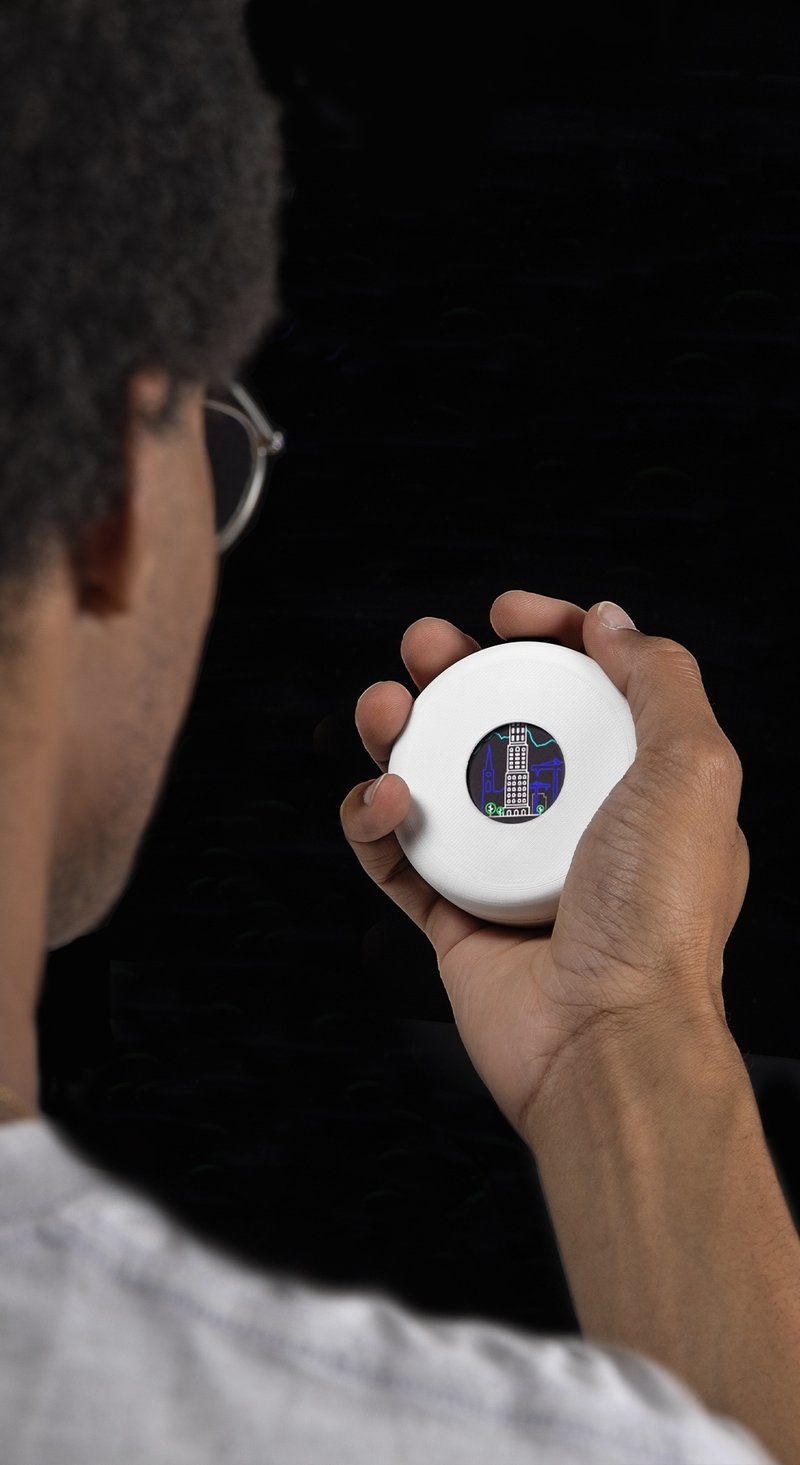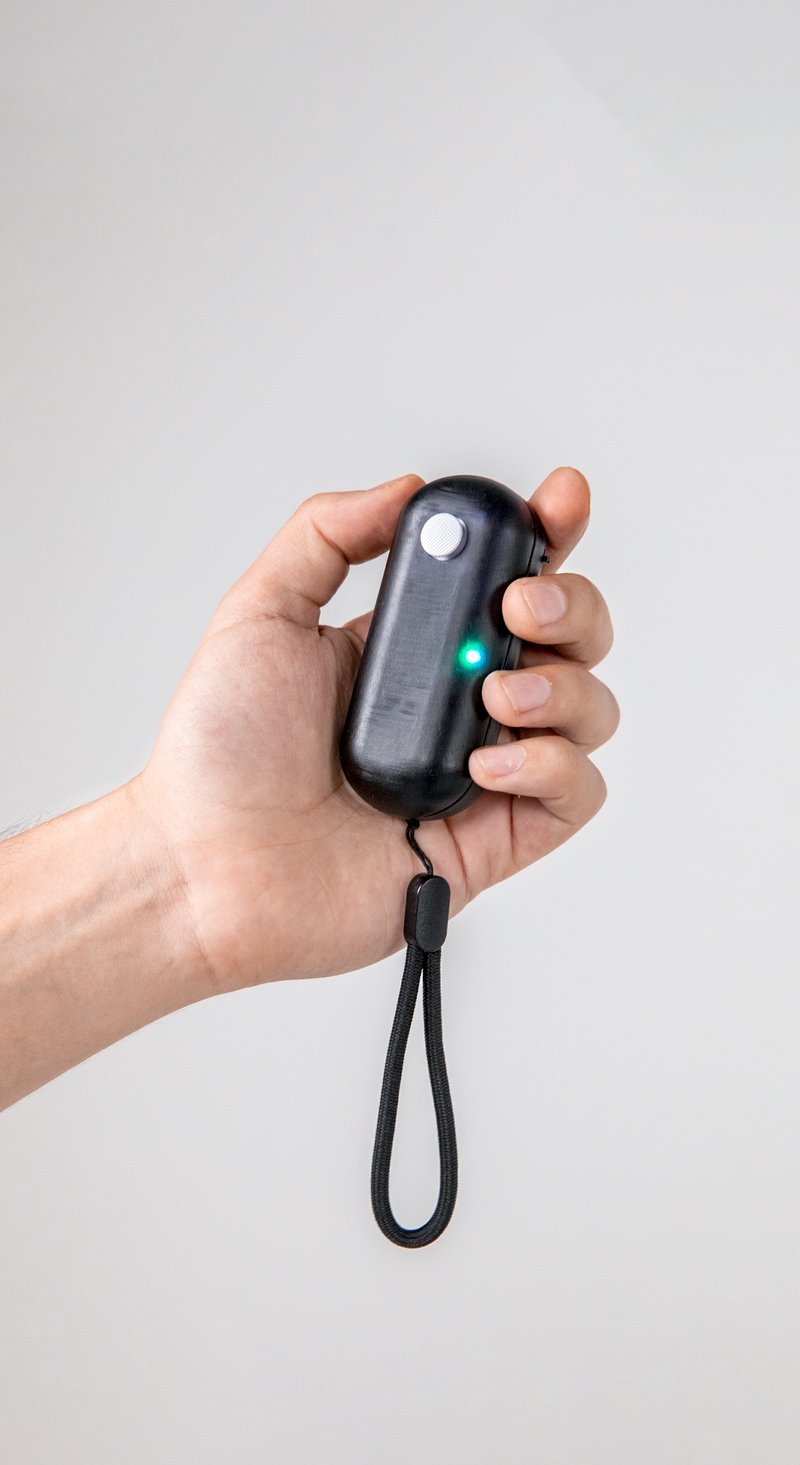
BA MEDIA & INTERACTION DESIGN
Malik Sobgoui – Oblique Reasoning
with Alain Bellet, Christophe Guignard, Gaël Hugo, Laura Nieder, Pauline Saglio
Nowadays, almost all of us have adopted the unconscious reflex of pulling out our smartphone when we are faced with some form of loneliness or passivity. Hence, it has become difficult for us to cope with waiting without the help of our cell phones. The aim of Oblique Reasoning is to invite users to question notions of attention economy and FOMO (Fear Of Missing Out) while offering, in the manner of Oblique Strategies, reflections and alternatives. By recording unread notifications and quantifying them in units of time, this portable device offers us the possibility to step back and rethink our relationship with the smartphone.
















